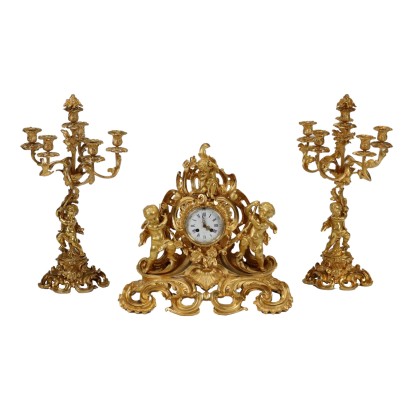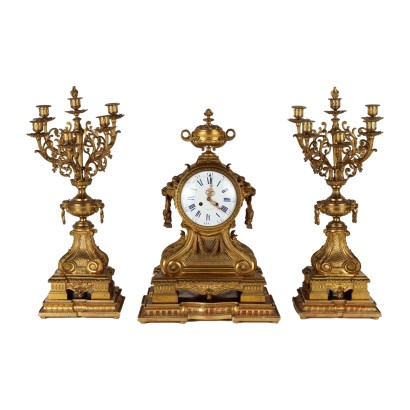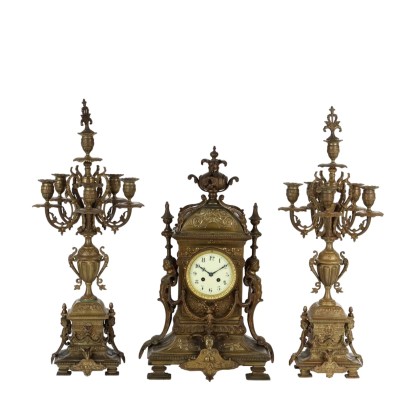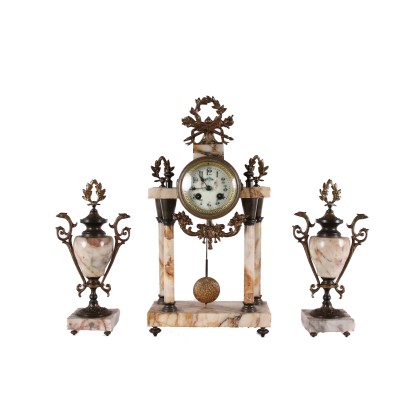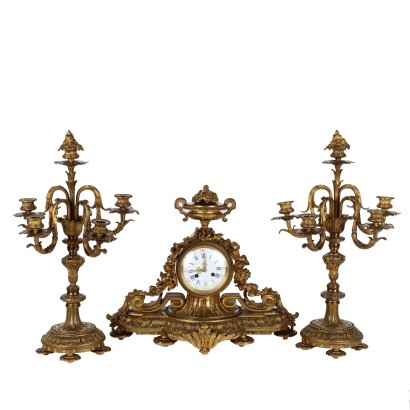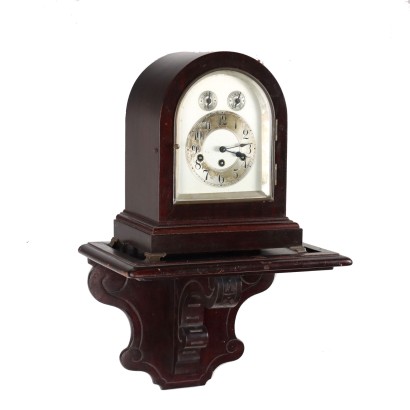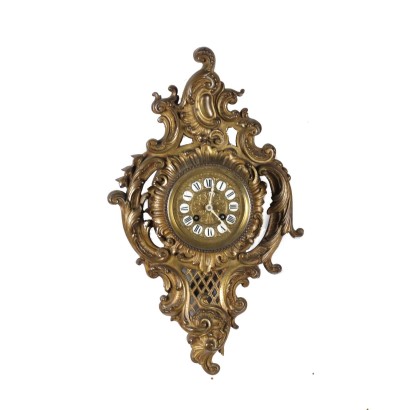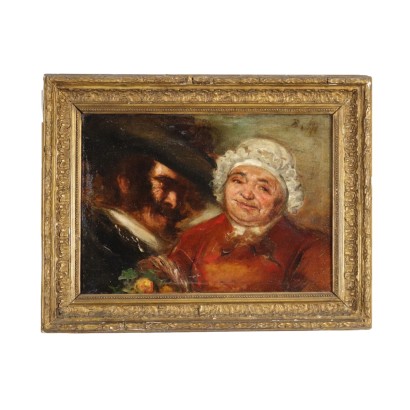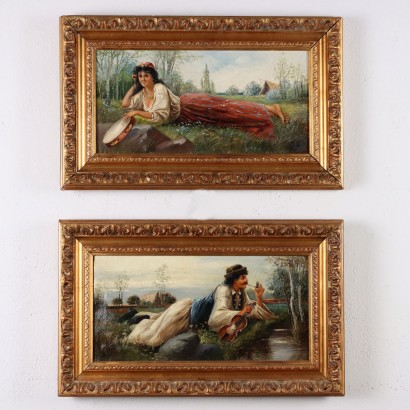Triptych Clock G. Raglia Milano Bronze Italy XIX Century
Features
Style: Napoleon III (1848-1870)
Age: 19th Century / 1801 - 1900
Origin: Milano, Italy
Material: Gilded Bronze
Description
Triptych clock in gilded and chiseled bronze. The clock has a wide base with finely chiseled leaf scroll decorations on which two cherubs rest holding a garland of flowers. At the top a small seated putto. The enameled metal display with hours in Roman numerals and minutes in Arabic numerals bears the manufacturer's trademark and is protected by a lid with curved glass. The candelabra in gilded and chiseled bronze with six lights, reproduce a base carved with leafy volutes on which rests a putto that supports the flames. The height of the candelabra measures 63 centimeters.
Product Condition:
Item in good condition, with small signs of wear. Mechanism not tested.
Dimensions (cm):
Height: 49
Width: 54
Depth: 22
Additional Information
Style: Napoleon III (1848-1870)
With Napoleon III as emperor, France experienced a period of extraordinary economic prosperity, a factor that allowed it to reconstitute a formidable war machine.In short, we relive the dream that already belonged to Bonaparte: France, a great European hegemonic power.
Euphoria and grandeur find perfect correspondence also in the furnishings that characterized the Second Empire.
In Italy, the Napoleon III style had initially insignificant effects, imposing furnishings of imitation Louis XVI with an ornamental value only resolved in carving and completely devoid of bronze trappings, in compliance with a more sober taste that will always characterize the Italian client.
Only in the first decades of the twentieth century did "French" furniture find important commercial outlets in our country.
This is the name of the artistic production of France under Napoleon III, president in 1848 and emperor from 1852 to 1870, the year of his abdication.
More than a style, we can speak of a set of styles, or rather of revivals, given that in recent years the eclectic trend that had already appeared during the previous Louis Philippe reign developed to its extreme consequences.
The drive to re-evaluate history and the Middle Ages also derives from the romantic spirit, as well as from the nationalistic one.
The houses are then decorated mixing different styles and drawing from both the past and the East, with a trend towards luxury and pomp that reflects the emperor's desire for grandeur.
In general there is a return to the whole of the eighteenth century, with particular attention to Louis XVI, the fashion for dark woods (ebony and rosewood), exotic ones and bronze applications is confirmed.
From the seventeenth century the inlay created by André-Charles Boulle, the great cabinetmaker of Louis XIV who created an inlay technique in gilded bronze and tortoiseshell, is recovered, in which one of the two materials acts as a background for the perforated designs of the other. < br/> Compared to the refinement of the original pieces, the "Boulle" furniture of this period is heavier and even more eye-catching, given the addition of bright colors through painted foils or parts in blue, red or green colored horn.
Always in the wake of eclecticism, Venetian furniture arouses particular interest, which stimulates the production of polychrome and gilded furniture, in which figures of Moretti often appear as a support.
The latter are also to be connected to the passion for the exotic that leads to the fashion of chinoiserie (especially after the conquest of Beijing in 1860).
Find out more about the Napoleon III style with our insights:
a Napoleon III Secretaire to discover the furniture with hiding places
A Napoleon III table to discover the caryatid
FineArt: Chandelier - O. Lelièvre & Susse Frères, Paris, last quarter of the 19th century < / a>
FineArt: Napoleon III sideboard



